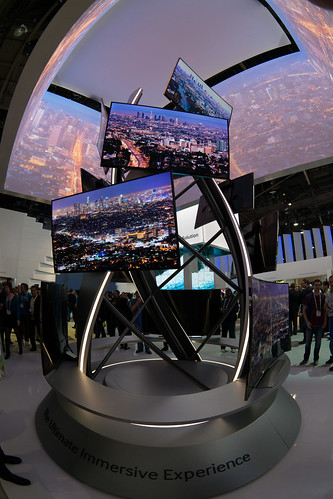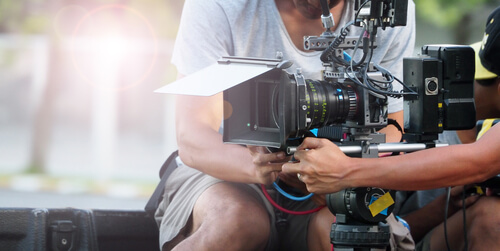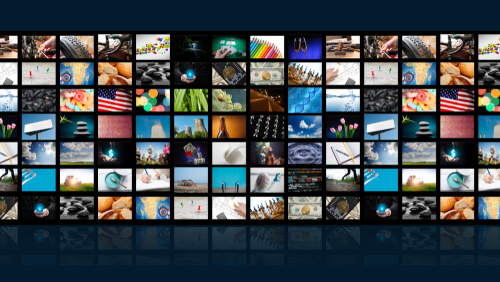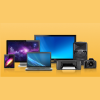Want to pull off a successful event? Renting a TV and using it to promote a new product, pitch for new business or train your staff is a surefire way to get you noticed and help you stand out from the competition.
TVs are a great way to interact with people, highlight products in an interesting way and offer dynamic video and image content.
What’s more, many event managers and marketing professionals are opting to rent TVs rather than buy them outright – it’s cheaper, means they don’t have to spend time maintaining equipment and it’s flexible – they can hire out products as and when they need them.
However, as you’ve probably noticed, different TVs serve different purposes and there are many different types to consider. A quick glance at the number of screens we offer for hire throws up a wide range of different products, from plasma TVs to video walls, LED displays and LCD displays, 4K displays, HD, UHD, 3D TVs and much more.
All have their advantages, but which one is best for your event? Here’s what you need to know.

Size matters: 80 inch TVs, 52 inch plasma TVs, video wall hire
When it comes to rental TVs, bigger isn’t necessarily best. On the market today you will find plasma TVs, LED screens and video walls from 32 inches all the way up to 103 inches. So which is best for you?
Modestly sized stand
If you’ll be working from a fairly small stall, it probably isn’t necessary to rent a large screen TV, like an 80 inch TV. In these situations, smaller can be better, so consider a 52 inch plasma TV or something a little more modest. That way, the TV will suit the size of your stand and won’t look out of place.
Smaller screens are a good bet if the environment you’re working from is non-competitive – a training session, say, or even a World Cup night with friends! In these situations, there isn’t as much an onus on grabbing people’s attention.
You could also consider video wall hire – these come in a variety of sizes including 55 inches and are great for offering exciting video and image content.
Large stand
If you will be operating from a larger stand, opt for a bigger TV to suit your needs. Whether it’s a major trade show or large-scale corporate event, you’ll need to get the edge on the competition and renting a big-ticket TV is a great way to do that.
Consider an 80 inch TV with a HD screen – it will allow you to present big, bold images and video with confidence and panache. In environments where you need to grab – and hold – customers’ attention, renting a larger TV makes good business sense. Your competitors will be doing the same – so you need to, too.
LED display, LCD display and plasma TV: what’s the difference?
You’ve no doubt heard of LED displays, LCD displays and plasma displays. How do they differ and which TV is right for your event? Here’s a quick guide.
Benefits of an LED display
- Bright, so good for use in bright, spacious halls and conference spaces
- Rich colour palette – offer customers a wide variety of colours
- Practical – they tend to be light and thin, so are easy to carry around
- Longer lifespan than LCDs
Benefits of an LCD display
All of the above, because LCD displays are actually very similar to LED displays. The only real tangible difference is that LED TVs are lit using light emitting diodes rather than fluorescent tubes, which LCDs are lit with.
However, be aware that LED displays and LCD displays are not as strong as plasma displays when it comes to black levels.
Benefits of a plasma TV
- Better for use in darker spaces – so if you’ll be outside or in a bright room, opt for LED or LCD
- Great for blacks
- Zero motion blur – fast-moving objects look really sharp on 52 inch plasma TVs
However, plasma TVs tend to be bulkier than LED and LCD displays.
Difference between HD and UHD TVs
Only a few years ago high definition (HD) TVs, with their excellent picture clarity and detail, were the next big thing. In a sign of the pace of technological development, today the newest kid on the block is the ultra high definition (UHD) TV.
The difference? It’s all in the pixels. HD screens come with 1920 x 1080 pixels – UHD, or 4K TVs as they are also known, come with a resolution of 3840 pixels by 2160 – only slightly smaller than the resolution found on cinema screens.
That’s a lot of pixels – four times the amount of pixels on HD screens, in fact. Why is this important? Well, if you want to really focus on detail in a presentation, pitch or training session then the bigger pixel size you can get, the better. A UHD display is particularly useful for larger screens – so consider one if you’re renting a TV that’s 50 inches or above, such as a 80 inch TV.
You may also have read about 8K displays. At the moment these screens – offering a whopping 7680×4320 pixels, roughly four times more than 4K displays – have only been exhibited at trade shows. However, experts expect them to be on sale next year.
3D TVs? Yes, they are a thing too. While not quite the trailblazer they were made out to be, 3D TVs offer content in three dimensions and are particularly useful for events. If you are planning a particularly interactive or innovative display, consider a 3D TV.
Don’t let the vast array of TV displays put you off. Each one has something to offer, depending on the type of event you’re planning to run. Explore our range of TV rental products for more information and advice.






